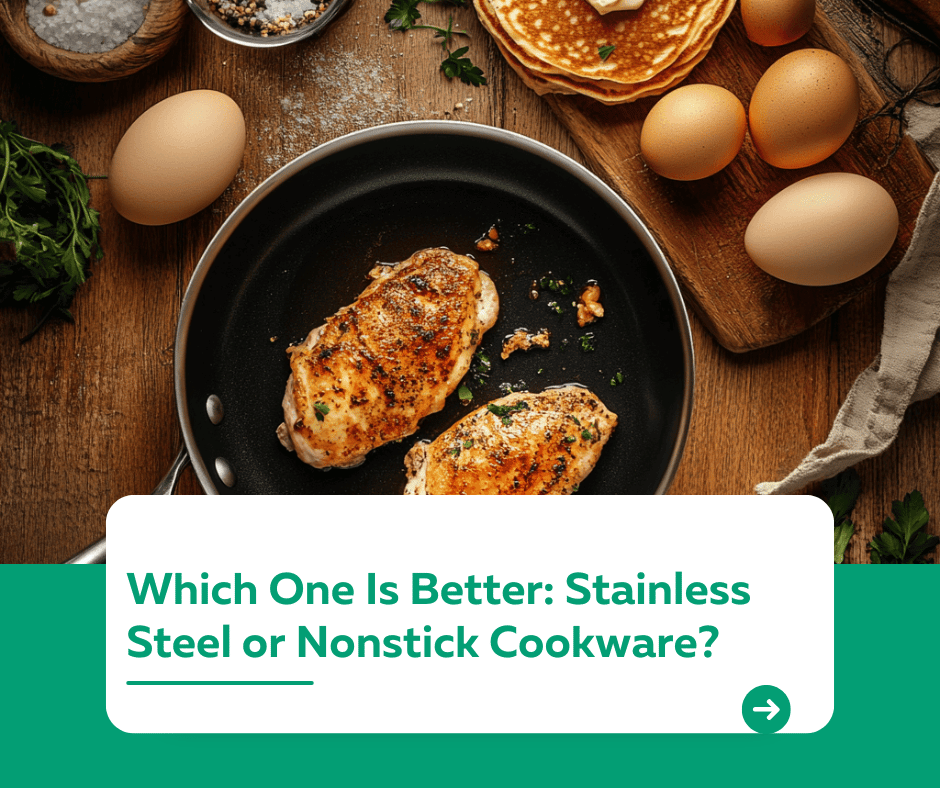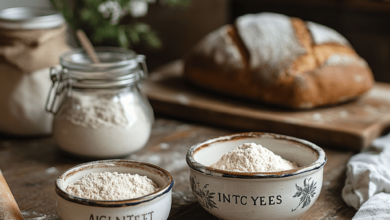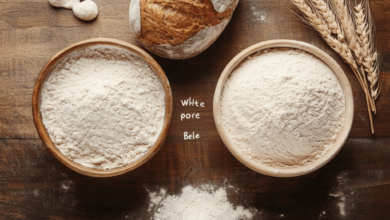Which One Is Better: Stainless Steel or Nonstick Cookware?

Introduction
“Which one is better: stainless steel or nonstick cookware?”
Choosing the right cookware can significantly impact your cooking experience. Both stainless steel and nonstick cookware have unique benefits and are suited to different types of cooking. In this article, we’ll compare these two popular cookware options to help you decide which one is best for your needs.
1. Why Choose Stainless Steel Cookware?
Stainless steel is a durable and versatile option favored by professional chefs.
- Advantages:
- Can handle high heat, perfect for searing and browning.
- Durable and resistant to scratching, warping, and corrosion.
- Non-reactive, making it safe for acidic foods like tomato sauces.
- Dishwasher-safe and long-lasting.
- Disadvantages:
- Food can stick without proper technique (e.g., preheating and using oil).
- Requires more effort to clean compared to nonstick pans.
Best Uses: Searing meat, sautéing vegetables, making sauces, and deglazing.
2. Why Choose Nonstick Cookware?
Nonstick cookware is ideal for convenience and delicate cooking.
- Advantages:
- Food doesn’t stick, making cooking and cleaning easier.
- Requires little to no oil, perfect for low-fat cooking.
- Lightweight and easy to handle.
- Disadvantages:
- Not suitable for high-heat cooking, as the coating can degrade.
- Prone to scratching—requires non-metal utensils and careful cleaning.
- Shorter lifespan compared to stainless steel.
Best Uses: Cooking eggs, pancakes, fish, and other delicate foods.
3. Heat Performance
- Stainless Steel:
- Heats evenly and retains heat well, making it ideal for browning and frying.
- Handles high temperatures for stovetop and oven use.
- Nonstick:
- Heats quickly but doesn’t retain heat as well.
- Best for low to medium heat.
Tip: Use stainless steel for high-heat cooking and nonstick for quick, low-heat tasks.
4. Maintenance and Care
- Stainless Steel:
- Dishwasher-safe, but handwashing with a gentle scrub is recommended for longevity.
- Use a stainless steel cleaner for stubborn stains and discoloration.
- Nonstick:
- Wash by hand with mild detergent—avoid abrasive scrubbers.
- Use wooden or silicone utensils to prevent scratching the coating.
Pro Tip: Avoid overheating nonstick pans to extend their lifespan.
5. Which One Should You Choose?
The best choice depends on your cooking habits and priorities:
- Choose Stainless Steel if:
- You frequently cook at high temperatures or need durable cookware.
- You enjoy making sauces or dishes that require deglazing.
- Choose Nonstick if:
- You prefer easy cleanup and lightweight cookware.
- You often cook delicate foods like eggs or crepes.
Conclusion
Both stainless steel and nonstick cookware have their strengths, and having both in your kitchen allows for versatility. Stainless steel excels in high-heat and heavy-duty tasks, while nonstick is perfect for delicate, low-fat cooking. By understanding their differences, you can make the right choice for your culinary needs.
For more cookware comparisons and kitchen tips, visit our Kuestion.com.




